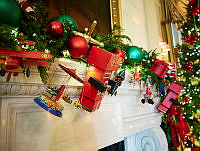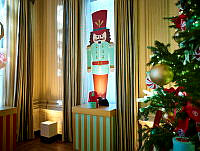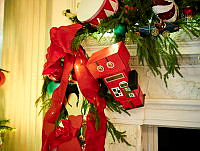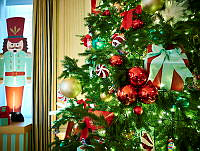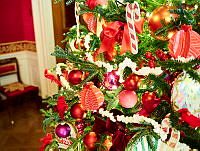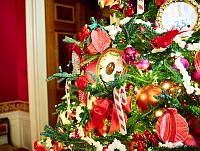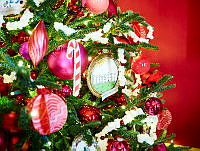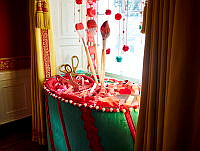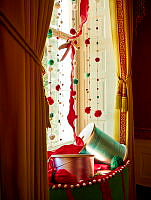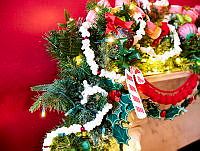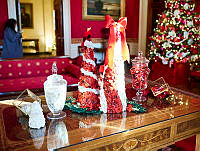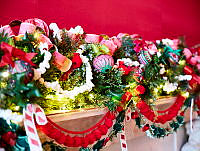Mrs. Taft and the Cherry Blossoms
Copyright © April 9, 2015 White House Historical Association. All rights reserved under international copyright conventions. No part of this article may be reproduced or utilized in any form or by any means, electronic or mechanical, including photocopying, recording, or by any information storage and retrieval system, without permission in writing from the publisher. Requests for reprint permissions should be addressed to books@whha.org

Helen Herron Taft, 1910, portrait by Karl B.A. Kronstad.
White House Collection/White House Historical AssociationWhen Helen Herron Taft became the nation’s first lady in March 1909, Eliza Ruhamah Scidmore had been vainly struggling for almost a quarter-century to interest Superintendents of the U.S. Army’s Office of Public Buildings and Grounds in planting Japanese flowering cherry trees to beautify the driveway of Potomac Park. Scidmore, an accomplished traveler, author, and reporter who had visited Japan, envisioned a scene similar to the orchard of cherry trees along the east embankment of the Sumida River in Tokyo’s Mukojima Park. Starting her entreaties anew with a new administration, she appealed to Helen Taft, who had become familiar with the beauty of Japanese cherry trees while visiting the country when her husband served as governor-general of the Philippines.1

Cherry blossoms, the spring time glory of the cherry blossoms in Uyeno Park, Tokyo, Japan, ca. 1905.
Scidmore approached Mrs. Taft at the right time, for the first lady had already shared her ideas for the enhancement of Potomac Park with the president’s military aide, Archibald Butt, and the Commissioner of Public Buildings and Grounds, Colonel Spencer Cosby. President William Howard Taft and First Lady Helen Taft were huge automobile enthusiasts and the seven-passenger White Steamer was the favorite of the White House fleet and often tested on the paved “Speedway” in Potomac Park and along the river.
Inspired by fond memories of pleasant evening carriage rides through the tree-lined streets of Manila, First Lady Helen Taft’s support for turning this “speedway” into a promenade led to the first public project ever undertaken by a first lady. A plan was formed and Mrs. Taft selected a site for a bandstand to hold Marine Band concerts in the park on Wednesday and Saturday afternoons.

The Boulevard, Potomac Park, Washington, D.C., ca. 1910.
“I have taken the matter up and am promised the trees,” First Lady Helen Taft told Scidmore on April 7, 1909, “but I thought perhaps it would be best to make an avenue of them, extending down to the turn in the road . . . Of course, they could not reflect in the water, but the effect would be very lovely of the long avenue.” 2 Ten days later Mrs. Taft’s proposal, Potomac Drive, officially opened and became an immediate success, the most fashionable place to go and be seen in Washington from April until late October in the early 20th century. 3 At the same time, the cherry blossom trees proposal went forward.
Scidmore approached two Japanese acquaintances—chemist Jokichi Takamine and Japan’s consul general in New York, Kokichi Mizuno—and they helped arrange a donation of 2,000 cherry trees from the mayor and city council of Tokyo, which arrived in Washington in January 1910. Unfortunately, agricultural inspectors found the trees to be so heavily infested with insects that they had to be destroyed. Undaunted, the group secured another donation of 3,020 Yoshino cherry trees, five giant boxes of 600 pounds each, which arrived safely in Seattle in early March 1912 aboard the freighter Awa Maru. The trees were then placed on specially heated, insulated railroad freight cars to speed them to Washington. 4
The plan to plant Japanese cherry trees along the drive also came to fruition with the aid and influence of First Lady Helen Taft. In 1910 Mayor Yukio Ozaki of Tokyo presented the first trees as a “memorial of national friendship between the U.S. and Japan.” On March 27, 1912, Mrs. Taft and the Iwa Chinda, wife of the Vicount Sutemi Chinda, the Japanese Ambassador, planted the first two of more than 3,000 Yoshino cherry trees on the northern bank of the Tidal Basin. 5 The trees’ attractive branching patterns and light pink flowers continue to be enjoyed today, a living memorial to Mrs. Taft and others whose persistence and vision made possible one of the loveliest attractions in the nation’s capital.

Photographers shooting Cherry blossoms, Washington, D.C. April 7, 1922.
By the 1920s Japanese cherry trees were planted throughout the Washington area and the Tidal Basin became the favored destination due to its stunning views of Washington’s monuments with the masses of cherry trees reflected in the water. Plans to cut down the cherry trees on the proposed site of the Jefferson Memorial led to objections from local civic groups and hotel trade associations, and organized protests from clubwomen. 6 Groups chained themselves to the trees to disrupt workmen in November 1938.7 As a compromise trees were transplanted and added on the south side of the basin to frame the Memorial dedicated in 1943. The new Memorial created a dramatic vista across the Tidal Basin to and from the White House. During cherry-blossom season the view has become perfect for picture postcards. 8
Today, the National Cherry Blossom Festival has grown from a modest celebration of spring cherry blossoms to one of Washington’s most anticipated annual events to herald in the spring season. Civic groups organized the first “Cherry Blossom Festival” in 1935. However, since First Lady Helen Taft’s involvement, the first ladies have supported the cherry blossom celebrations and all first ladies in recent years have served as Honorary Chair of the festival.

Cherry Blossoms in front of the White House, 2015.











































